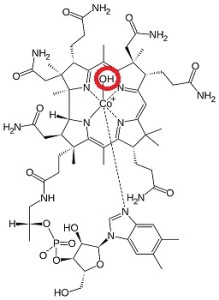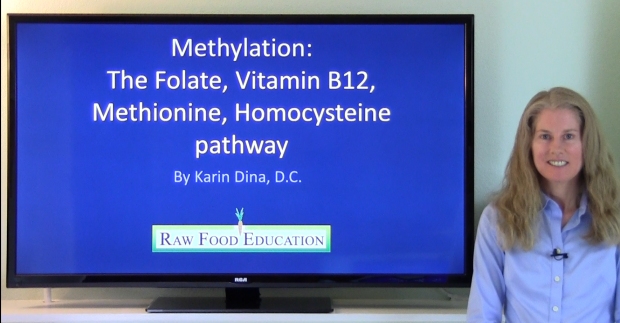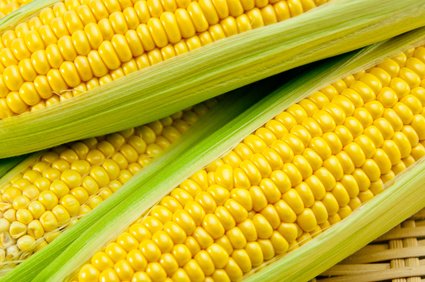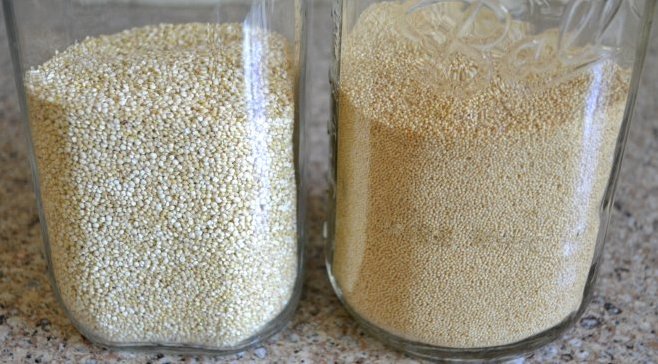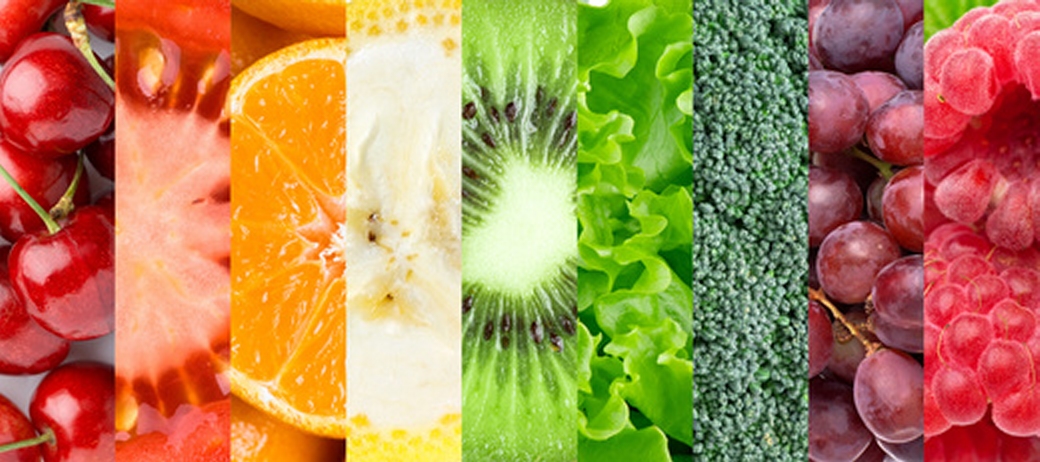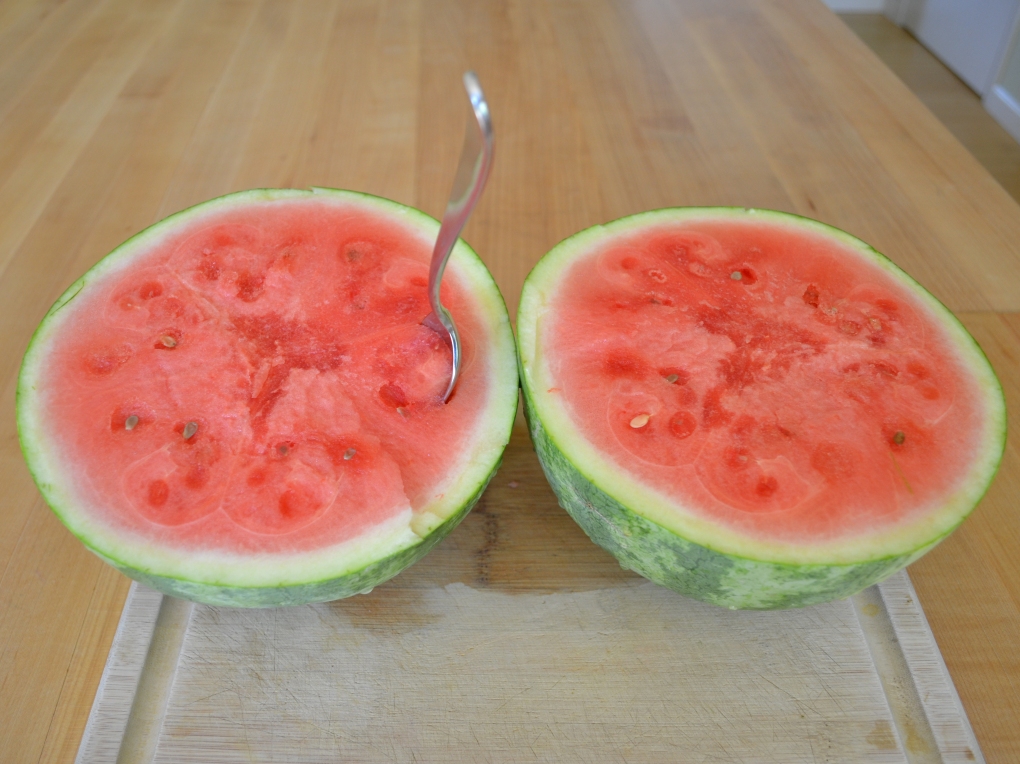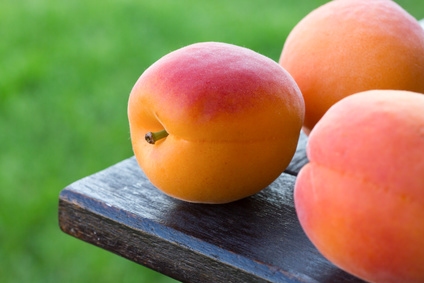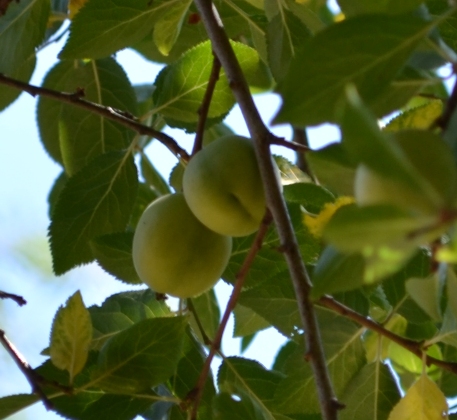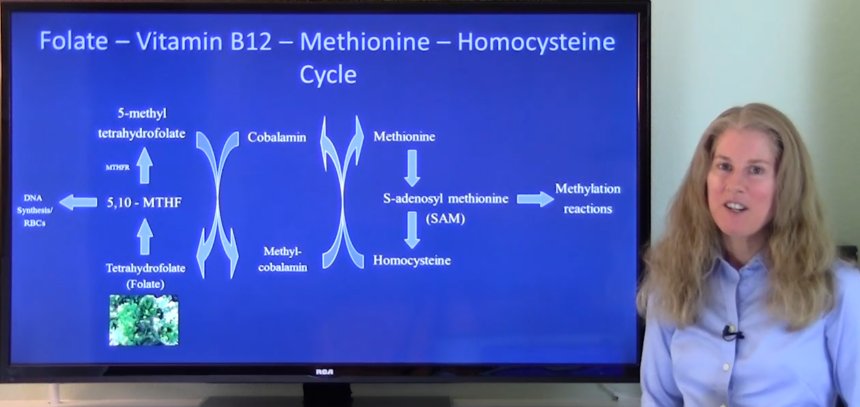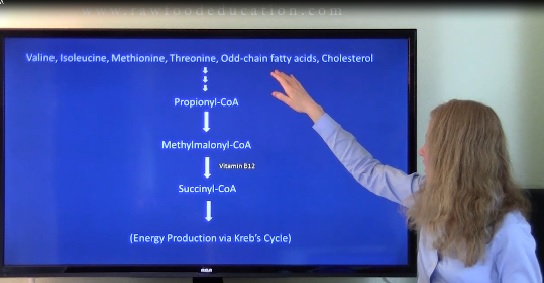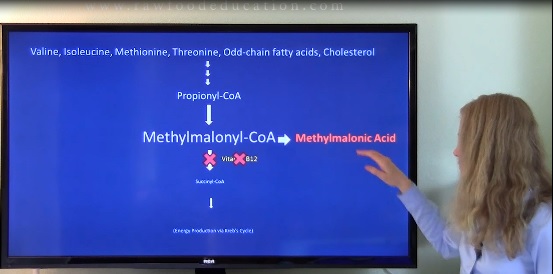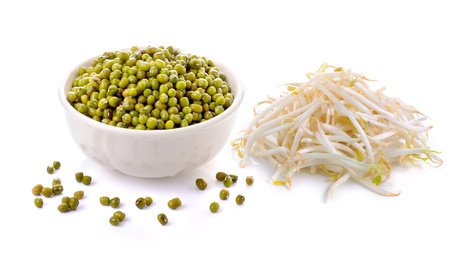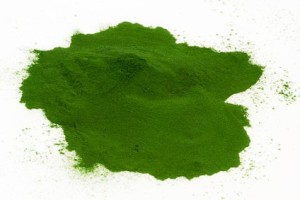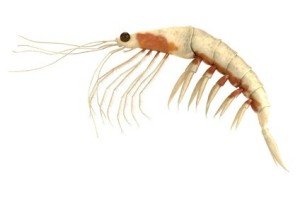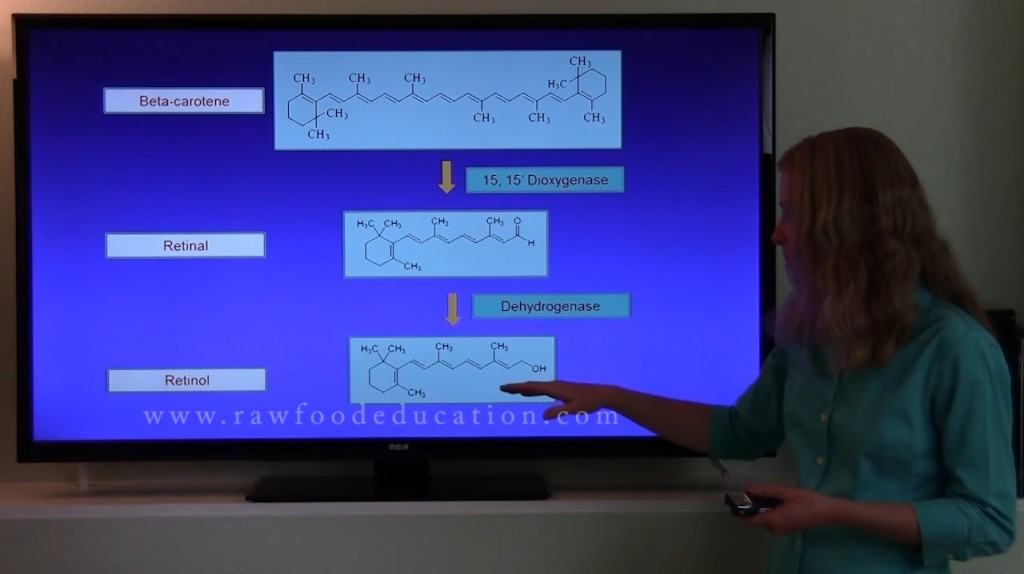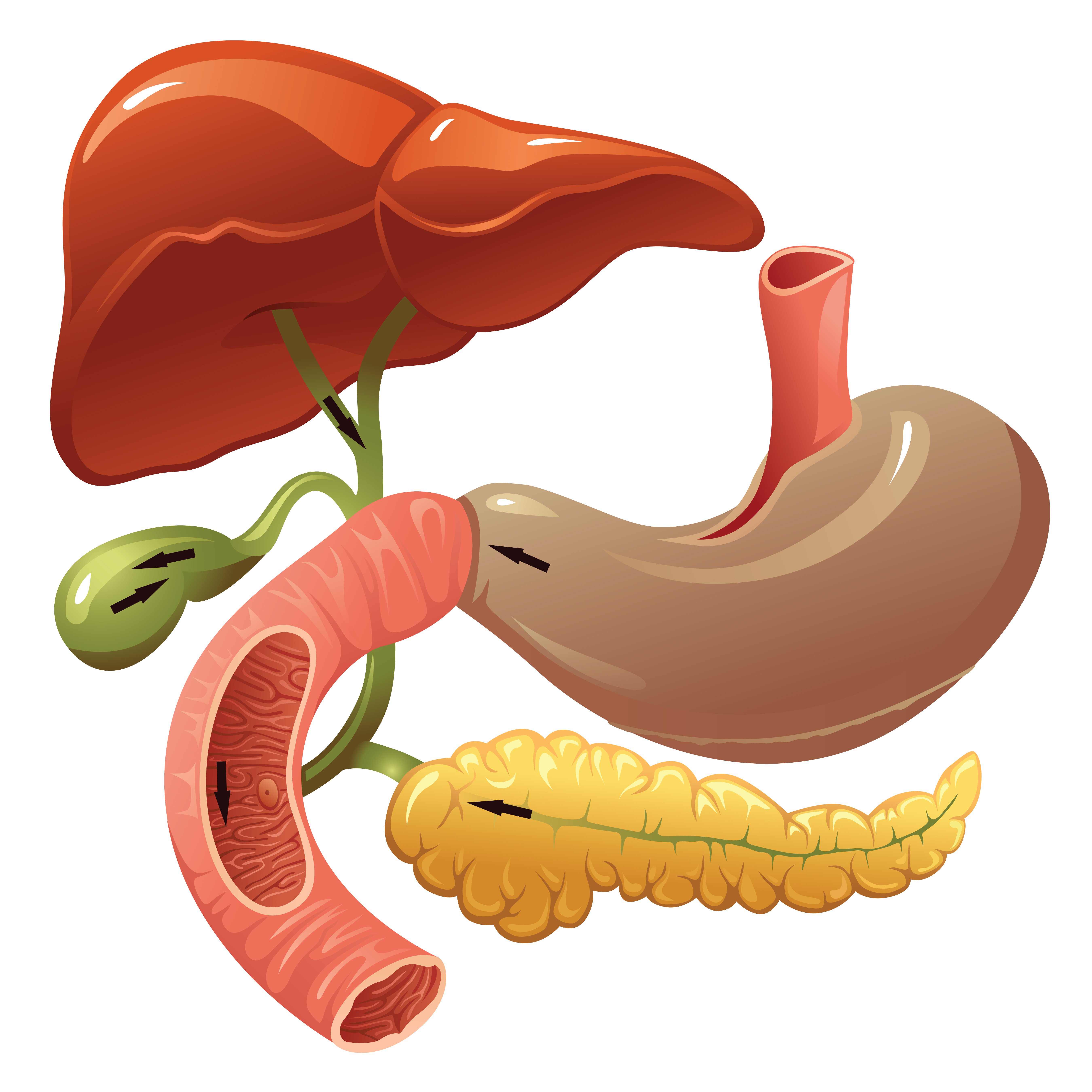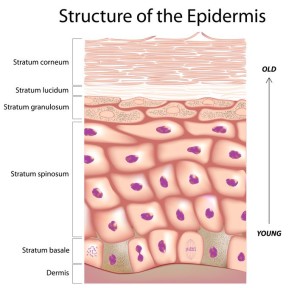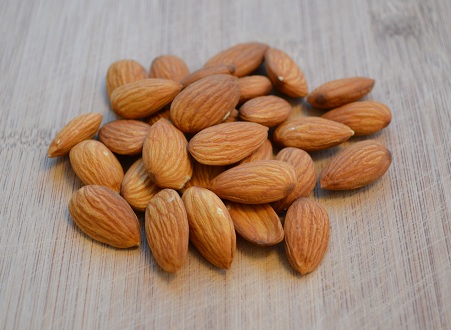 In recent years, vitamin D has become one of the most discussed nutrients in the health community. It is also one of the most complicated and controversial of the nutrients, especially when it comes to supplementation and plant-based diets.
In recent years, vitamin D has become one of the most discussed nutrients in the health community. It is also one of the most complicated and controversial of the nutrients, especially when it comes to supplementation and plant-based diets.
There are two supplemental forms of vitamin D: vitamin D2 and vitamin D3. Vitamin D2, also known as ergocalciferol, has historically been thought of as the vegan form of vitamin D. On the other hand, vitamin D3, also known as cholecalciferol, has historically been considered a non-vegan form of vitamin D. Vitamin D2 supplements have traditionally been made from mushrooms. Exposure of ergosterol in these fungi to UVB light rays (ultraviolet B spectrum rays of the sun) leads to the production of vitamin D2. Conversely, vitamin D3 supplements have been made from lanolin found in sheep’s wool. Exposure of 7-dehydrocholesterol in lanolin to UVB rays leads to the formation of vitamin D3, similar to how vitamin D3 is produced in our skin.
 Research is mixed on which supplement is more reliably effective at raising our vitamin D levels. Much of this research has indicated that the D3 form of vitamin D is more effective at raising blood levels of vitamin D than D2, however some indicates the two can be equivalent. Many vegans have expressed concern to us about this, since they have found their vitamin D2 supplements are not giving them the results they are seeking. Consequently, some have considered using a D3 supplement to raise their vitamin D to desired levels. Where does this leave someone who wants to stay true to their vegan lifestyle and ethics? Fortunately in recent years, several supplement companies have formulated supplements with vitamin D3 sourced from lichen. What is lichen? It is an organism composed of some type of fungus and algae, or cyanobacteria in some cases, living together symbiotically. Lichen is often found growing on tree branches and rocks and can have a pale green to gray or mushroom color, as well as others. Does this mean that we should eat lichen to get our vitamin D? No, many species of lichen are not edible, so it would be best to stick with a supplement. But the good news is that a vegan vitamin D3 supplement does now exist and various supplement companies are offering it as an alternative to lanolin-sourced D3!
Research is mixed on which supplement is more reliably effective at raising our vitamin D levels. Much of this research has indicated that the D3 form of vitamin D is more effective at raising blood levels of vitamin D than D2, however some indicates the two can be equivalent. Many vegans have expressed concern to us about this, since they have found their vitamin D2 supplements are not giving them the results they are seeking. Consequently, some have considered using a D3 supplement to raise their vitamin D to desired levels. Where does this leave someone who wants to stay true to their vegan lifestyle and ethics? Fortunately in recent years, several supplement companies have formulated supplements with vitamin D3 sourced from lichen. What is lichen? It is an organism composed of some type of fungus and algae, or cyanobacteria in some cases, living together symbiotically. Lichen is often found growing on tree branches and rocks and can have a pale green to gray or mushroom color, as well as others. Does this mean that we should eat lichen to get our vitamin D? No, many species of lichen are not edible, so it would be best to stick with a supplement. But the good news is that a vegan vitamin D3 supplement does now exist and various supplement companies are offering it as an alternative to lanolin-sourced D3!
Interested in taking your knowledge to the next level? We cover this topic and so much more in our online Mastering Raw Food Nutrition and Educator Course. For more class details, click here.
One of the best ways to keep in touch with us is to join our email list. You’ll receive a free copy of Our Top 12 Strategies for Long Term Success on A Raw Plant-Based Diet eBook along with regular information about raw food and plant-based diets and periodic promotions for our classes, events, and other offerings!
What are the different forms of vitamin B12?
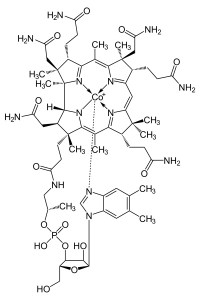 Over the years, people have asked me about the differences between the available supplemental forms of vitamin B12. What are they? Do they occur in nature or are they made in a laboratory? Do some forms work “better” than others?
Over the years, people have asked me about the differences between the available supplemental forms of vitamin B12. What are they? Do they occur in nature or are they made in a laboratory? Do some forms work “better” than others?
The scientific name for vitamin B12, cobalamin, is derived from the element cobalt found at the center of the vitamin B12 molecule. There are several different forms of vitamin B12, each named for the chemical group attached to cobalt, including hydroxocobalamin, methylcobalamin, cyanocobalamin, and adenosylcobalamin. I have seen these forms of B12 available as individual supplements or in multivitamin formulas.
Hydroxocobalamin
Hydroxocobalamin is a naturally-occurring form of vitamin B12, as it is made by certain bacteria including some strains that live in soil. Not all types of bacteria make vitamin B12 and not all soil contains B12 producing bacteria. Yeast, mushrooms and other types of fungus do not produce vitamin B12, neither do animals nor plants.
Hydroxocobalamin is NOT active in the human body; it requires conversion to a human bioactive form. Hydroxocobalamin has an –OH (hydroxy) group attached to cobalt in the center of the vitamin B12 molecule. To activate this form of B12, the human body removes the –OH group and replaces it with, for example, a methyl (–CH3) group to create the human bioactive form of vitamin B12, methylcobalamin.
Methylcobalamin
Methylcobalamin is a form of vitamin B12 that is involved in methylation reactions in the human body. Another of my videos covers the importance of methylation and the role played by this form of vitamin B12, so I would encourage you to view it for further explanation. Dr. Rick and I have used methylcobalamin for many years and find it to be a reliable form of B12 for our needs. We especially like this form of vitamin B12 because it is a human bioactive form and does not require conversion.
Cyanocobalamin
Cyanocobalamin is a synthetic form of B12 made exclusively in a laboratory. It is not a human bioactive form of vitamin B12 and is not made by bacteria in nature. Cyanocobalamin has a –CN (cyano) group attached to cobalt in the center of the vitamin B12 molecule. Many people have expressed concern about this cyano group as being problematic or toxic, but I have yet to see research or clinical data indicating the use of cyanocobalamin as being associated with these types of issues. When one expresses concern to me, I suggest the use of another supplemental form. As mentioned earlier, I have been using methylcobalamin for many years with good results. If someone is not getting the results they want from their vitamin B12 supplement, clinically or otherwise, I suggest that they contact a qualified healthcare provider to help them find the solution that works best for them.
Despite this controversy, cyanocobalamin is one of the most popular supplemental forms of vitamin B12 because of its stability and shelf-life. For example, cyanocobalamin has a longer shelf-life than methylcobalamin, so supplement manufacturers like to produce and sell it. Since cyanocobalamin is not human bioactive, our body must convert it to one of the human bioactive forms. In which case, the body must remove the –CN group and replace it with either a methyl group or an adenosyl group.
Adenosylcobalamin
Like methylcobalamin, adenosylcobalamin is one of the human bioactive forms of vitamin B12. This is the form of vitamin B12 that can be stored by our body, specifically in our liver. All previously discussed forms of B12 can be converted into adenosylcabalamin for storage, when our body has more vitamin B12 than is needed for body function.
Adenosylcobalamin is also very important for energy-producing reactions in the human body, as are various other B vitamins. Additionally, adenosylcobalamin is responsible for keeping methylmalonic acid levels appropriately low in the human body. I have a recent video and article describing the significance of methylmalonic acid and its conversion by adenosylcobalamin in the human body, and would encourage you to view it for more information.
Interested in taking your vitamin B12 and nutrition knowledge to the next level? We cover this topic and so much more in our online Mastering Raw Food Nutrition and Educator Course. For more class details, click here.
Additionally, our book The Raw Food Nutrition Handbook: An Essential Guide to Understanding Raw Food Diets addresses many hot topics in raw food nutrition such as vitamin D, essential fats, protein, nutrient content of raw food diets, food combining, enzymes, hydration, vitamins, minerals, and many more. We value education on these important topics and are happy to finally bring this book to you. The book is available on Amazon and other online booksellers.
One of the best ways to keep in touch with us is to join our email list. You’ll receive a free copy of Our Top 12 Strategies for Long Term Success on A Raw Plant-Based Diet eBook along with regular information about raw food and plant-based diets and periodic promotions for our classes, events, and other offerings!
Why is vitamin B12 so important for our health? How is vitamin B12 used in the human body?
Many people over the years have asked me about why vitamin B12 is so important for our health and what vitamin B12 actually does in the human body. Vitamin B12 is involved in numerous methylation reactions throughout the body and in a vitamin B12 deficiency, these reactions can become compromised.
Vitamin B12 is involved in the production of our genetic code (DNA and RNA), activation of folate, production of red blood cells, keeping homocysteine appropriately low in our body, the production of certain cell membrane components, the production of certain neurotransmitters (including serotonin, melatonin, epinephrine, and dopamine), important reactions involving energy production, and nervous system function. The bottom line is that vitamin B12 is vitally important for a number of life-sustaining activities in our body and should not be overlooked when considering one’s overall health.
Check out this video for more details:
The information in this video builds on a video I did several months ago on the vitamin B12 – folate connection. If you're interested in taking your knowledge to the next level.........
We cover this topic and so much more in our online Mastering Raw Food Nutrition and Educator Course. For more class details, click here.
Additionally, our book The Raw Food Nutrition Handbook: An Essential Guide to Understanding Raw Food Diets addresses many hot topics in raw food nutrition such as essential fats, protein, nutrient content of raw food diets, food combining, enzymes, hydration, vitamins, minerals, and many more. We value education on these important topics and are happy to finally bring this book to you. The book is available on Amazon and other online booksellers.
One of the best ways to keep in touch with us is to join our email list. You’ll receive a free copy of Our Top 12 Strategies for Long Term Success on A Raw Plant-Based Diet eBook along with regular information about raw food and plant-based diets and periodic promotions for our classes, events, and other offerings!
Gluten in Foods: Common and Uncommon Knowledge
Gluten is a popular and controversial topic for a number of reasons, with very strong voices on all sides of the conversation. Being a clinician, I always have the interest of the individual in mind given that the achievement of personal health is the ultimate goal. To this end, I am constantly looking for reliable information grounded in reliable biochemistry, physiology, research, and clinical experience to help people reach their health goals, especially since much of the most compelling information is not common knowledge. There are many simple facts that are well understood about gluten which are often perpetuated in the media, but there are some important pieces of the gluten puzzle not popularly known or well understood. For the past couple of years, I have been hearing from students and other people with gluten-related health challenges that their gluten free diet was not getting them the results they were expecting. On closer inspection and with some recent research, I learned some fascinating information that I will cover in this article. But for now, let’s start with:
The basics
Foods that contain gluten are found in one plant family, the grain family, also known as the grass family. The scientific name for this family is the Poaceae. Often people may think that grains and grasses are in separate plant families, when in fact they are in the same plant family.
Although gluten is found only in grains, not all members of the grain family contain gluten. Currently, wheat, rye, barley, triticale, spelt, and kamut are the grain family members considered to contain true gluten. These foods, or foods that contain these foods as ingredients, such as certain processed or prepared foods, contain true gluten. Processed foods can often hide gluten-containing ingredients in them, so it’s important to read labels. Despite these grains being identified as containing gluten, there has been some concern about the gluten-free status of other members of the grain family. A 2009 study showed that a percentage of compliant people with celiac disease (gluten intolerance) on a gluten free diet still did not get the results they were seeking in terms of symptom reversal and lab test results. One of the possibilities considered by the researchers was cross contamination of their diet with gluten containing grains. Another concern raised was the consumption of other members of the grain family that contain proteins which resemble gluten.
The controversy
There are several perceived gluten free grains that are currently under investigation and information on them is growing, but for our purposes, we will focus on oats and corn, two of the most popularly consumed gluten free grains. Oats are a popular breakfast food and corn is commonly found in many forms in processed and prepared foods.
Many sources consider oats to be gluten free, but there are some challenges with them. Oats can sometimes be processed in facilities that may also process gluten containing grains, so there may be some cross contamination between these other grains and oats. Another consideration is avenin, a protein found in oats that is biochemically similar to gluten. Some people who are sensitive to gluten may have a similar experience with oats for this reason. Recent research indicates there is a wide range of variation in potential effects that different cultivated varieties of oats can have on gluten intolerant individuals. This means that some varieties of oats may have notable effects while others may have less of an effect.
Corn is also a member of the grain family, and like oats, is considered to be gluten free by many sources. However, corn contains zein; a protein that is biochemically similar to gluten and is often referred to as “corn gluten.” A study published in 2013 indicated that some gluten intolerant individuals may have symptoms and lab test results consistent with the ingestion of gluten containing grains despite adherence to a gluten free diet. Corn consumption by these individuals was cited as being a possible reason for this outcome. The researchers also noted that even though a gluten intolerant individual may not experience overt symptoms from eating corn, there may still be small intestine effects that can be identified through laboratory testing.
At this time, more research is needed to fully understand the gluten status of oats, corn, and other members of the grain family. In the meantime, there are plenty of foods that do not contain gluten or gluten-like proteins. For example, foods commonly consumed on a raw plant based diet such as fruits, vegetables, sea vegetables, nuts, and seeds are not members of the grain family and therefore do not contain gluten. Although anything that can germinate (including grains) is botanically considered a “seed,” commonly understood seeds such as chia, sesame, pumpkin, sunflower, hemp, flax, and poppy seeds do not contain gluten.
Quinoa and amaranth are often mistaken for grains, but they are not members of the grain family. They are members of the amaranth plant family (Amaranthaceae), and do not contain gluten. Amaranth and quinoa are often referred to as pseudograins or pseudocereals, because of their resemblance to true grains.
The Bottom Line
The good news is that if one is eating a whole food plant based diet that does not contain members of the grain family (Poaceae), they are consuming a diet free of gluten. Gluten is an area of nutrition with ongoing investigation. Sometimes it takes a while for this research to reach the general population, so my goal here is to provide tools of exploration for people who are seeking their greatest health potential. In our Science of Raw Food Nutrition series of classes that we teach at Living Light, we cover gluten and other popular cutting edge raw food and nutrition related topics to assist you in achieving your health goals.
If you're interested in taking your knowledge to the next level.........
We cover this topic and so much more in our online Mastering Raw Food Nutrition and Educator Course. For more class details, click here.
Additionally, our book The Raw Food Nutrition Handbook: An Essential Guide to Understanding Raw Food Diets addresses many hot topics in raw food nutrition such as essential fats, protein, nutrient content of raw food diets, food combining, enzymes, hydration, vitamins, minerals, and many more. We value education on these important topics and are happy to finally bring this book to you. The book is available on Amazon and other online booksellers.
One of the best ways to keep in touch with us is to join our email list. You’ll receive a free copy of Our Top 12 Strategies for Long Term Success on A Raw Plant-Based Diet eBook along with regular information about raw food and plant-based diets and periodic promotions for our classes, events, and other offerings!
References:
Fric P, Gabrovska D, Nevoral J. Celiac disease, gluten-free diet, and oats. Nutr Rev. 2011 Feb;69(2):107-15.
Lanzini A, Lanzarotto F, Villanacci V, Mora A, Bertolazzi S, Turini D, Carella G, Malagoli A, Ferrante G, Cesana BM, Ricci C. Complete recovery of intestinal mucosa occurs very rarely in adult coeliac patients despite adherence to gluten-free diet. Aliment Pharmacol Ther. 2009 Jun 15;29(12):1299-308.
Maglio M, Mazzarella G, Barone MV, Gianfrani C, Pogna N, Gazza L, Stefanile R, Camarca A, Colicchio B, Nanayakkara M, Miele E, Iaquinto G, Giardullo N, Maurano F, Santoro P, Troncone R, Auricchio S. Immunogenicity of two oat varieties, in relation to their safety for celiac patients. Scand J Gastroenterol. 2011 Oct;46(10):1194-205.
Ortiz-Sánchez JP, Cabrera-Chávez F, de la Barca AM. Maize prolamins could induce a gluten-like cellular immune response in some celiac disease patients. Nutrients. 2013 Oct 21;5(10):4174-83.
Silano M, Pozo EP, Uberti F, Manferdelli S, Del Pinto T, Felli C, Budelli A, Vincentini O, Restani P. Diversity of oat varieties in eliciting the early inflammatory events in celiac disease. Eur J Nutr. 2014 Aug;53(5):1177-86.
Real A, Comino I, de Lorenzo L, Merchán F, Gil-Humanes J, Giménez MJ, López-Casado MÁ, Torres MI, Cebolla Á, Sousa C, Barro F, Pistón F. Molecular and immunological characterization of gluten proteins isolated from oat cultivars that differ in toxicity for celiac disease. PLoS One. 2012;7(12):e48365.
We love watermelon, but what about the seeds?
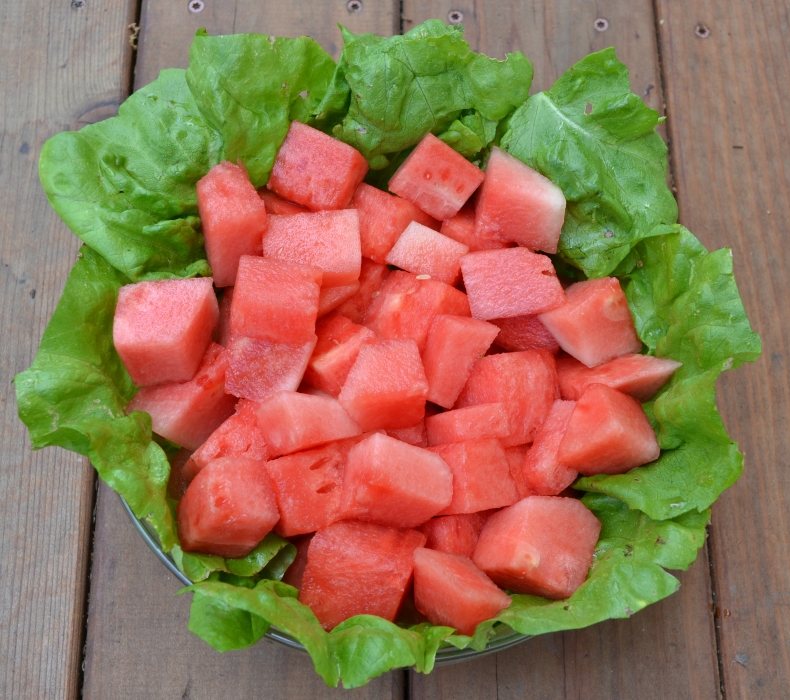 Watermelon season is here! For me, watermelon is totally synonymous with summer fun and enjoying it often brings me to another time and place. My childhood memories of watermelon-soaked backyard gatherings, pool parties, and beach parties abound. In fact, I am eating a watermelon as I am writing this!
Watermelon season is here! For me, watermelon is totally synonymous with summer fun and enjoying it often brings me to another time and place. My childhood memories of watermelon-soaked backyard gatherings, pool parties, and beach parties abound. In fact, I am eating a watermelon as I am writing this!
When I became interested in raw food 25 years ago, watermelon became an actual food for me, rather than a dessert. And just like at summer gatherings, back then I would remove the seeds from the watermelon before eating. Ever heard that old wives' tale that if you eat watermelon seeds they will sprout in your body? Well, we all know that doesn’t happen, but I did grow up thinking watermelon seeds were to be removed before eating the melon.
It wasn’t until college that I learned that those little white watermelon seeds were actually edible. Watermelon is in the cucumber plant family (Cucurbitaceae), along with summer squash, zucchini, winter squash varieties, pumpkin, and other melons such as honeydew and cantaloupe. Pumpkin seeds are famous for their zinc content, so what about watermelon seeds?
Two tablespoons of shelled dry watermelon seeds contain 1.4 mg of zinc, along with 1 mg of iron, 70 mg of magnesium, and more. For only 75 calories, the iron, zinc, and magnesium content of these seeds is excellent. When compared to a similar measure of pumpkin seeds, the zinc content is similar.
| Watermelon seeds – Two tablespoons | Pumpkin seeds – Two tablespoons | Adult DRI | |
| Calories | 75 | 93 | |
| Magnesium | 70 | 92 | 310 – 320 mg for women, 400 – 420 mg for men |
| Iron | 1.0 | 2.6 | 8 mg for men and postmenopausal women, 18 mg for premenopausal women |
| Zinc | 1.4 | 1.3 | 8 mg for women, 11 mg for men |
Most watermelons these days are seedless, but now when I come across the occasional white seed, I eat it along with the watermelon flesh. I do not eat the black seeds largely because I rarely find them. When I do find them, I compost them simply because I do not enjoy their flavor.
What about watermelon itself? Isn’t it controversial for some reason?
To make it easy for people to find reliable information on watermelon and other fruits, the glycemic index, glycemic load, fructose, glucose, and carbohydrates in general, we dedicated a chapter in our book, The Raw Food Nutrition Handbook: An Essential Guide to Understanding Raw Food Diets to answering many common carbohydrate questions.
In the book we also cover other hot topics in raw food nutrition such as essential fats, protein, nutrient content of raw food diets, food combining, enzymes, hydration, vitamins, minerals, and many more. We value education on these important topics and are happy to finally bring this book to you. The book is available on Amazon and other online booksellers.
One of the best ways to keep in touch with us is to join our email list. You’ll receive a free copy of Our Top 12 Strategies for Long Term Success on A Raw Plant-Based Diet eBook along with regular information about raw food and plant-based diets and periodic promotions for our classes, events, and other offerings!
The Best Kept Secret about Apricots
While on a 6-mile run yesterday, I found several different types of fruit trees with developing fruits, one of which was an apricot tree. Since it is June, the fruits are still small and green, but later this summer this tree will be packed with beautiful, orange, ripe apricots!
People often think of fruit as being low in important minerals, but what I have found from my research tells a different story. It is important to look at individual fruits and their mineral content before jumping to conclusions. For example, 15 pitted apricots have 70 mg of calcium and 2 mg of iron. It is not unusual for raw food enthusiasts to consume this amount of fruit or more in one sitting, so when considering the daily values, apricots when eaten in quantity can potentially provide a significant amount of these two important minerals.
Apricots, like other fruits such as bananas and dates, are not surprisingly a great source of potassium and 15 pitted apricots contain 1360 mg. For 252 calories worth of food, the amounts of these important minerals can make a great contribution to our daily needs.
| Apricots – 15 pitted | Adult DRI | |
| Calories | 252 | |
| Calcium | 70 mg | 1000 – 1200 mg |
| Iron | 2 mg | 8 mg for men and postmenopausal women18 mg for premenopausal women |
| Potassium | 1360 mg | 4700 mg |
Apricots in-training
________________________________________________________________
One of the best ways to keep in touch with us is to join our email list. You’ll receive a free copy of Our Top 12 Strategies for Long Term Success on A Raw Plant-Based Diet eBook along with regular information about raw food and plant-based diets and periodic promotions for our classes, events, and other offerings!
How can folate mask a vitamin B12 deficiency?
This pathway is a little biochemically-intense, so I encourage you to watch the video first and then read the text below for clarification.
Vitamin B12 converts homocysteine to methionine by transferring methyl groups from 5-methyl tetrahydrofolate to homocysteine.
In a vitamin B12 deficiency, we often see elevated homocysteine levels, because vitamin B12 is not available to transform homocysteine into methionine. So, homocysteine levels increase.
In a vitamin B12 deficiency we can also see large red blood cells, referred to as macrocytic anemia, because vitamin B12 is not available to convert 5-methyl tetrahydrofolate back into folate. This is called the "methyl folate trap", where folate is "trapped" in the form of 5-methyl tetrahydrofolate. Folate is used to create red blood cells and DNA, and when there isn't enough folate available, red blood cells do not fully mature and stay large. On a lower folate diet, such as with many versions of the standard western diet, we tend to see this situation.
However, when someone with a vitamin B12 deficiency eats a higher folate diet, such as on a plant-based diet, there is a constant supply of folate to create red blood cells and DNA, so red blood cells may appear normal in size. This is how folate can mask a vitamin B12 deficiency. In other words, one needs look beyond the size of red blood cells when testing for vitamin B12 deficiency, and employ other reliable vitamin B12 tests. Accurate vitamin B12 testing by a knowledgeable, licensed clinician is essential for determining one's vitamin B12 status.
If you're interested in taking your knowledge to the next level.........
We cover this topic and so much more in our online Mastering Raw Food Nutrition and Educator Course. For more class details, click here.
One of the best ways to keep in touch with us is to join our email list. You’ll receive a free copy of Our Top 12 Strategies for Long Term Success on A Raw Plant-Based Diet eBook along with regular information about raw food and plant-based diets and periodic promotions for our classes, events, and other offerings!
What is methylmalonic acid and how does it relate to vitamin B12?
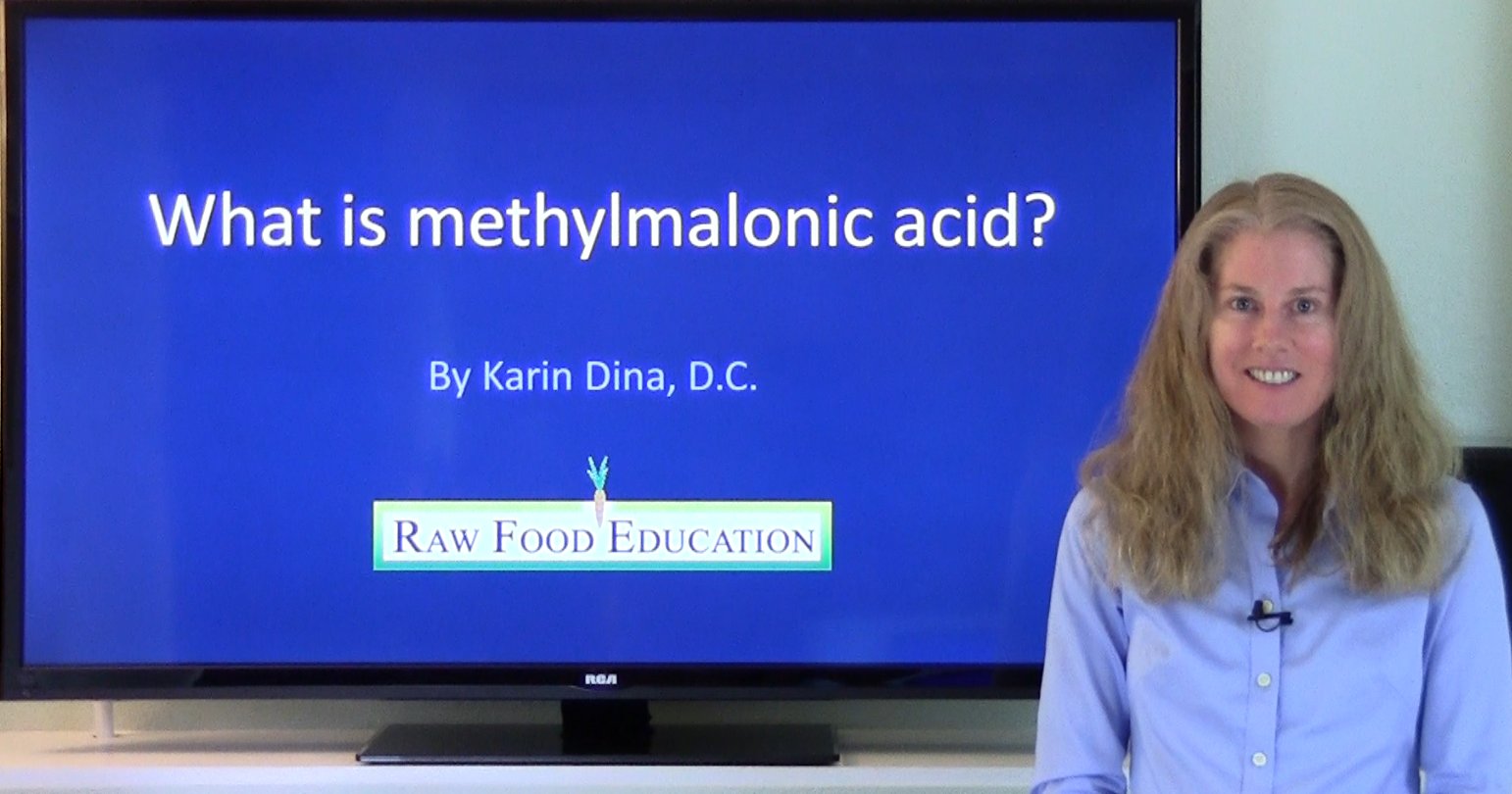 Methylmalonic acid (MMA) is a popular vitamin B12 test.
Methylmalonic acid (MMA) is a popular vitamin B12 test.
But what actually is MMA and where does it come from? In the human body, MMA is a breakdown product or byproduct of protein, carbohydrate, and cholesterol metabolism. In other words, when a variety of proteins, fatty acids, and cholesterol are used to create energy, one of the byproducts is methylmalonic acid.
The specifics of this energy producing pathway are described as follows: In the creation of energy, the amino acids valine, isoleucine, methionine, threonine, odd-chain fatty acids, and cholesterol all go through a variety of metabolic processes to be converted into a substance called propionyl CoA. Propionyl Co-A is then converted into methylmalonyl CoA. When we are in good human bioactive B12 status, methylmalonyl CoA is then converted into succinyl CoA by an enzymatic reaction in which vitamin B12 is a co-factor. In other words, vitamin B12 is essential for the conversion of methylmalonyl CoA into succinyl CoA.
Succinyl CoA is an intermediate in the Kreb’s Cycle (also known as the TCA cycle), which is involved in energy production. We now see how vitamin B12 plays a role in energy production in our body.
What happens when someone becomes B12 deficient? The pathway that converts methylmalonyl CoA into succinyl CoA becomes de-emphasized and the amount of methylmalonyl CoA starts to increase. As this amount increases, methylmalonyl CoA is converted into methylmalonic acid. Methylmalonic acid does not have any specific function in the body, so it is eliminated from the body by the urinary tract. When one is deficient in vitamin B12, their blood and urine generally have elevated levels of methylmalonic acid.
Vitamin B12 is very important for this pathway and many other reactions throughout the body. The bottom line is that it is a good idea to know our vitamin B12 status, which we can achieve through reliable B12 testing.
We cover the importance of vitamin B12, reliable testing, and reliable sources in our book, The Raw Food Nutrition Handbook, An Essential Guide to Understanding Raw Food Diets. If you are interested in our lab testing and nutrition consulting services, please visit www.rawfoodconsulting.com.
This video explains how and why methylmalonic acid can be created in the human body:
One of the best ways to keep in touch with us is to join our email list. You’ll receive a free copy of Our Top 12 Strategies for Long Term Success on A Raw Plant-Based Diet eBook along with regular information about raw food and plant-based diets and periodic promotions for our classes, events, and other offerings!
The Protein Content of Various Types of Sprouts
Are sprouts as rich in protein as they are rumored to be? How does the protein content of different types of sprouts compare? This video gives a good summary of available information:
One of the best ways to keep in touch with us is to join our email list. You’ll receive a free copy of Our Top 12 Strategies for Long Term Success on A Raw Plant-Based Diet eBook along with regular information about raw food and plant-based diets and periodic promotions for our classes, events, and other offerings!
Can fruit make a meaningful iron contribution to a raw plant-based diet?
One of the best ways to keep in touch with us is to join our email list. You’ll receive a free copy of Our Top 12 Strategies for Long Term Success on A Raw Plant-Based Diet eBook along with regular information about raw food and plant-based diets and periodic promotions for our classes, events, and other offerings!
Spirulina and Chlorella: What are they?
- Are they plants?
- Are they animals?
- What are they exactly?
To get a better understanding about spirulina and chlorella, let’s examine the five kingdoms of life:
- Plantae – the plant kingdom
- Animalia – the animal kingdom
- Fungi – the fungus kingdom
- Protista – the protist kingdom
- Monera – the single-celled organism kingdom or the bacteria kingdom
All living organisms on this planet are grouped into one of these five kingdoms.
Spirulina
Spirulina has been classified as a type of cyanobacteria. Cyanobacteria are single-celled organisms with a chloroplast, conferring photosynthetic ability. Photosynthesis is the process by which an organism creates its own food from sunlight. The chloroplasts in spirulina give it a blue-green coloring, which is why spirulina is often informally referred to as a “blue-green algae”. It’s not actually an algae, it’s a type of bacteria.
There are two species of spirulina available as products:
- Arthrospira platensis – formerly known as spirulina platensis
- Arthrospira maxima – formerly known as spirulina maxima
Given that spirulina is a type of cyanobacteria, it is found in the bacteria kingdom.
There are many species of chlorella all of which have been classified as green algae. Historically, most types of algae have been grouped in the plant kingdom, however, some species of algae including chlorella are considered to be structurally simpler and smaller than plants. Because chlorella is such a small algae, there are some researchers that would like to have it classified as a protist. At this time, there is some controversy as to whether or not chlorella is a plant or a protist.
Let’s take a closer look at what a protist actually is. Is a protist an animal? No, animals are grouped in a separate kingdom of their own. Protists are multicellular, they have many cells, so they are not bacteria. Protists are not as complex and have a simpler cellular organization than plants, animals, or fungi, which is one of the reasons why protists have their own separate kingdom. Protists generally live in water examples of which include simpler algaes and other types of microscopic organisms. Although its classification is a work in progress, chlorella clearly has never been classified as animal, only a plant or protist.
For comparison, let’s consider krill. How does krill compare to chlorella? Krill is known for its omega-3 fat content, specifically DHA. Krill has been classified in the animal kingdom because it has a nervous system, digestive system, eyes, and other structures and functions in common with animals. Krill is a small animal at 5 cm in length. By contrast, chlorella is 0.0005 cm in diameter and spirulina is 0.0005 cm long, both being much smaller than krill.
In summary, spirulina is a type of cyanobacteria classified in the bacteria kingdom, while chlorella is a type of algae that has been historically considered in either the plant kingdom or the protist kingdom. Clearly neither spirulina nor chlorella has ever been grouped in the animal kingdom.
Interested in taking your nutrition knowledge to the next level?
We cover this topic and so much more in our online Mastering Raw Food Nutrition and Educator Course. For more class details, click here.
Additionally, our book The Raw Food Nutrition Handbook: An Essential Guide to Understanding Raw Food Diets addresses many hot topics in raw food nutrition such as essential fats, protein, nutrient content of raw food diets, food combining, enzymes, hydration, vitamins, minerals, and many more. We value education on these important topics and are happy to finally bring this book to you. The book is available on Amazon and other online booksellers.
One of the best ways to keep in touch with us is to join our email list. You’ll receive a free copy of Our Top 12 Strategies for Long Term Success on A Raw Plant-Based Diet eBook along with regular information about raw food and plant-based diets and periodic promotions for our classes, events, and other offerings!
What is so great about dandelion greens?
One of the best ways to keep in touch with us is to join our email list. You’ll receive a free copy of Our Top 12 Strategies for Long Term Success on A Raw Plant-Based Diet eBook along with regular information about raw food and plant-based diets and periodic promotions for our classes, events, and other offerings!
How do you know if a food contains gluten?
One of the best ways to keep in touch with us is to join our email list. You’ll receive a free copy of Our Top 12 Strategies for Long Term Success on A Raw Plant-Based Diet eBook along with regular information about raw food and plant-based diets and periodic promotions for our classes, events, and other offerings!
Research, Clinical Experience, and Personal Experience: Which is Most Important?
One of the best ways to keep in touch with us is to join our email list. You’ll receive a free copy of Our Top 12 Strategies for Long Term Success on A Raw Plant-Based Diet eBook along with regular information about raw food and plant-based diets and periodic promotions for our classes, events, and other offerings!
Beta-carotene absorption and conversion to vitamin A on a raw plant-based vegan diet
 Where does one get vitamin A on a plant-based vegan diet?
Where does one get vitamin A on a plant-based vegan diet?
Vitamin A is essential for proper cell growth and reproduction and is probably best known for its importance in vision. It also plays an important role in immune system function and skin health. Vitamin A (also known as retinol) is found exclusively in animal foods and various vitamin supplements. Vitamin A is an essential nutrient for humans, so if one is eating a vegan diet, where is this vitamin A obtained? Fortunately, the human body converts beta-carotene and certain other carotenoids to vitamin A when necessary. Beta-carotene is a well-known carotenoid famous for providing carrots with their orange coloring and is found in many other plant foods, especially green, yellow, and orange-colored fruits and vegetables.
Beta-carotene conversion to vitamin A
How does this conversion of beta-carotene to vitamin A work? In the human body, beta-carotene is converted to retinal by a dioxygenase enzyme. Retinal is then converted to retinol (vitamin A) by a dehydrogenase enzyme:
Other carotenoids that are capable of converting to vitamin A in the human body include alpha-carotene, gamma-carotene, and beta-cryptoxanthin. Of the four carotenoids, the one that converts the most reliably to vitamin A is beta-carotene.
Why is my skin orange?
Vitamin A is a fat-soluble nutrient, which means that it can be stored in our body and we run the risk of getting too much from outside sources, such as supplements consumed in excess of the body’s needs. Carotenoids are fat soluble also, but do not carry the same risks as vitamin A with excess consumption. In excess of the body’s needs, carotenoids are stored in fat cells including those under our skin, giving an orange color to the skin which is only cosmetic.
Do we have to cook our food to get enough beta-carotene and vitamin A?
Many people have asked about the effectiveness of this carotenoid conversion mechanism and how well carotenoids are absorbed from raw food. A recent study found normal vitamin A status and favorable blood beta-carotene levels in 200 long-term raw food enthusiasts. This indicates is that these raw foodists consumed a good amount of beta-carotene, a quantity was absorbed and was present in their bloodstream, and then an appropriate amount was converted into vitamin A.
References:
Fleshman, Matthew Kintz. Beta Carotene Absorption and Metabolism. Ph.D. dissertation, Ohio State University, 2011.
Garcia A, Koebnick C, Dagnelie P, Strassner C, Elmadfa I, Katz N, Leitzmann C, Hoffman I. British Journal of Nutrition 2008; 99: 1293 – 1300.
Interested in taking your vitamin A, beta-carotene, and general nutrition knowledge to the next level?
We cover this topic and so much more in our online Mastering Raw Food Nutrition and Educator Course. For more class details, click here.
Additionally, our book The Raw Food Nutrition Handbook: An Essential Guide to Understanding Raw Food Diets addresses many hot topics in raw food nutrition such as essential fats, protein, nutrient content of raw food diets, food combining, enzymes, hydration, vitamins, minerals, and many more. We value education on these important topics and are happy to finally bring this book to you. The book is available on Amazon and other online booksellers.
One of the best ways to keep in touch with us is to join our email list. You’ll receive a free copy of Our Top 12 Strategies for Long Term Success on A Raw Plant-Based Diet eBook along with regular information about raw food and plant-based diets and periodic promotions for our classes, events, and other offerings!
Video on the Vitamin E content in Raw and Roasted Almonds
One of the best ways to keep in touch with us is to join our email list. You’ll receive a free copy of Our Top 12 Strategies for Long Term Success on A Raw Plant-Based Diet eBook along with regular information about raw food and plant-based diets and periodic promotions for our classes, events, and other offerings!
Does our body release all types of digestive enzymes at the same time?
This is a great question that is often asked in the context of food combining. Much of the information disseminated about food combining in the raw food community is decades-old, so here I will cover this topic from the perspective of current digestive physiology. Our body makes three main types of digestive enzymes: amylase for carbohydrate digestion, proteases for protein digestion, and lipase for fat digestion.
Depending where we are in the digestive system, our body will release certain types of digestive enzymes. For example, when we are chewing food, our salivary glands release saliva along with two types of digestive enzymes: salivary amylase for carbohydrate digestion and lingual lipase for fat digestion, so carbohydrate and fat digestion begin in the mouth. After food has been chewed, it is swallowed and moves down the esophagus into the stomach. There, the food comes in contact with other digestive factors such as hydrochloric acid and a protein digesting enzyme called pepsin, so protein digestion begins in the stomach.
After food leaves the stomach, it moves into the small intestine, where it interacts with digestive factors secreted by the pancreas. These factors include the enzymes amylase, protease, and lipase for carbohydrate, protein, and fat digestion, respectively. The pancreas releases ALL THREE types of these enzymes at the same time. This fact is important, given that the foods that we eat are some combination of carbohydrate, protein, and fat. One notable exception is oil with 100% of the calories from fat.
Here are some plant foods and their carbohydrate, protein, and fat content as a percentage of calories:
| Type of Food | Carbohydrate | Protein | Fat |
| Fruit | 89% | 6% | 5% |
| Vegetables | 73% | 18% | 9% |
| Nuts and Seeds | 16% | 11% | 73% |
| Legumes | 66% | 30% | 4% |
| Grains | 80% | 12% | 8% |
| Oil | 0 | 0 | 100% |
| Avocados | 19% | 5% | 76% |
| Coconuts | 17% | 4% | 79% |
| Spirulina | 26% | 64% | 10% |
As you can see, all of these foods contain some amount of each of the three macronutrients. We think of fruits as being a high in carbohydrates, but they also contain some protein and fat! Occasionally, I hear people say that nuts and seeds are a rich source of protein, but in reality, they are much higher in fat. Per calorie, vegetables are a more notable source of protein than nuts and seeds.
Our take home message here is that all whole foods are some combination of carbohydrate, protein, and fat so it is important that the body release enzymes for digestion of all three of these macronutrients at the same time. Additionally, these enzymes do not cancel each other out as some food combining literature states. As mentioned earlier, there is much that we have learned about digestive physiology since food combining principles were first introduced years ago, and we will certainly learn more in years to come. This does not mean that we should disregard food combining principles altogether, but instead use the individual principles that best support our personal health.
Here is video summarizing this information:
For those of you interested in learning more about food combining from the perspective of current research and digestive physiology, my book, the Raw Food Nutrition Handbook: An Essential Guide to Understanding Raw Food Diets provides this information using easy to understand language. I cover this topic and many more hot topics in raw food and nutrition in general to support you in your health journey.
One of the best ways to keep in touch with us is to join our email list. You’ll receive a free copy of Our Top 12 Strategies for Long Term Success on A Raw Plant-Based Diet eBook along with regular information about raw food and plant-based diets and periodic promotions for our classes, events, and other offerings!
Video: What I Learned about Vitamin B12 from the Framingham Offspring Study
One of the best ways to keep in touch with us is to join our email list. You’ll receive a free copy of Our Top 12 Strategies for Long Term Success on A Raw Plant-Based Diet eBook along with regular information about raw food and plant-based diets and periodic promotions for our classes, events, and other offerings!
Three common vitamin D questions answered: Is vitamin D deficiency just for vegans, how is vitamin D made in our skin, and what is the best test for vitamin D?
 Is vitamin D deficiency just for vegans?
Is vitamin D deficiency just for vegans?
Many times I have heard people say that they stopped eating a plant-based vegan diet because they tested low in vitamin D. The fact is that vitamin D deficiency is not solely an issue for vegans, vegetarians, and raw foodists. A 2011 study estimated the prevalence of vitamin D deficiency in the US population at 42 percent on average and in some segments of the population this prevalence is as high as 82 percent. The researchers in this study defined vitamin D deficiency as a blood level of vitamin D less than or equal to 20 ng/ml. Opinions on this number differ. For example, various clinicians and the Vitamin D Council define vitamin D deficiency as less than or equal to 30 ng/ml, so these sources may see the estimated average vitamin D deficiency prevalence in the US as higher than 42%.
According to a Vegetarian Times survey, about 3% of the US population follows a vegetarian diet and approximately half of these people identify as vegan. As we can see from the stats mentioned above, vitamin D deficiency is clearly not just a concern for vegans, vegetarians, and raw food enthusiasts. Vitamin D status is an important consideration for everyone regardless of diet.
How is vitamin D made in our skin?
When we are outside and we have bare skin exposed to the sun, ultraviolet B spectrum rays interact with 7-dehydrocholesterol in our skin to produce cholecalciferol, also known as vitamin D3. After vitamin D3 is formed, it travels via the bloodstream down to the liver where it is converted to 25-hydroxycholecalciferol, also known as 25-hydroxyvitamin D3. 25-hydroxycholecalciferol then travels via the bloodstream down to the kidneys, where it is transformed to 1,25-dihydroxycholecalciferol, also known as 1,25-dihydroxyvitamin D3, which is considered to be the activated form of vitamin D.
Vitamin D3 is produced in an area of the skin called the epidermis. The epidermis has five layers, the first of which we can see, called the stratum corneum. Vitamin D3 is produced further down in levels 4 and 5 of the epidermis called the stratum spinosum and the stratum basale, after which vitamin D3 travels through the bloodstream to the liver for conversion.
Many people spend time in the sun but still find that they test low in vitamin D. There are some factors that can inhibit vitamin D production in the skin, specifically air pollution, skin type, time of day, age, sunscreen usage, latitude, time of year, and other factors. For example, air pollution in significant amounts can potentially obscure the rays of the sun, inhibiting skin production of vitamin D.
Sunscreen use at SPF 8 and above may affect the production of vitamin D in the skin as can latitude and season. For example, the ability of one’s skin to make vitamin D year round is consistent at 35 degrees north latitude and below in the northern hemisphere*, or 35 degrees south latitude and above in the southern hemisphere*. In the United States, 35 degrees north is Los Angeles on the west coast and the border of North and South Carolina on the east coast. The ability of one’s skin to make vitamin D in the winter will be reduced or eliminated for someone living above 35 degrees north and below 35 degrees south. Simply stated, people who live in northern parts of the United States have been found not to produce vitamin D in their skin during the winter months.
How do we determine our vitamin D status?
The best way to know is to get a blood test, and the test currently considered to be the best measurement of vitamin D status is known as the 25-hydroxycholecalciferol, 25-hydroxyvitamin D3, or 25-OH D3 test.
Would you like to learn how much vitamin D is made in the skin per unit time or are you interested in taking your general vitamin D and nutrition knowledge to the next level? We cover this topic and so much more in our online Mastering Raw Food Nutrition and Educator Course. Mastering Raw Food Nutrition is the updated and expanded version of our popular Science of Raw Food Nutrition classes. For more class details, click here.
Additionally, our book The Raw Food Nutrition Handbook: An Essential Guide to Understanding Raw Food Diets addresses many hot topics in raw food nutrition such as vitamin D, essential fats, protein, nutrient content of raw food diets, food combining, enzymes, hydration, vitamins, minerals, and many more. We value education on these important topics and are happy to finally bring this book to you. The book is available on Amazon and other online booksellers.
One of the best ways to keep in touch with us is to join our email list. You’ll receive a free copy of Our Top 12 Strategies for Long Term Success on A Raw Plant-Based Diet eBook along with regular information about raw food and plant-based diets and periodic promotions for our classes, events, and other offerings!
References:
Dina K, Dina R. The Raw Food Nutrition Handbook. Summertown, TN: Healthy Living Publications, 2015.
Forrest KY, Stuhldreher WL. Prevalence and correlates of vitamin D deficiency in US adults. Nutr Res. 2011 Jan;31(1):48-54.
http://www.vegetariantimes.com/article/vegetarianism-in-america/
www.vitamindcouncil.org
*Examples of areas in the northern hemisphere include North America, Europe, and Asia. Examples of areas primarily in the southern hemisphere include: South America, Australia, New Zealand, and islands of the South Pacific Ocean. Africa is located in both the northern and southern hemispheres.
Here is a video summarizing this information on how vitamin D is made in the skin:
Vitamin E in raw versus roasted almonds
I am often asked by my students about the difference, if any, in nutrient content between raw and cooked foods. I recently found an interesting research article that considered the difference in vitamin E content between raw and roasted almonds. Vitamin E, often referred to as alpha tocopherol, is an antioxidant and an essential nutrient for humans. Antioxidants are well known for their ability to neutralize free radicals before they can cause damage to our cells.
Almonds are known as a rich source of vitamin E:
| Nutrient | Raw Almonds (2 Tbsp., 17.9 g, 0.63 oz.) | Adult Daily Values |
| Calories | 103 | |
| Vitamin E (alpha tocopherol specifically) | 4.69 | 15 mg |
This very recent study noted that subject blood levels of alpha tocopherol were 33% greater after the consumption of raw almonds versus roasted almonds. The researchers of this study speculated that the reason for this was that the alpha tocopherol content of the raw almonds was likely higher than in the roasted almonds. This makes sense, given that antioxidants are broken down in food by cooking in varying amounts depending on the type of food, cooking method, cooking time, and cooking temperature.
Could this outcome also have to do with vitamin E bioavailability differences between the raw and the roasted almonds? This potential was not mentioned in the study, but I think this is entirely possible. One would have to do another study or two to test these individual options. The bottom line here is that roasting did appear to have some type of effect on vitamin E, either directly through its breakdown, by changing its bioavailability, or maybe even through some other means that has yet to be considered.
References:
USDA Nutrient Database
Bornhorst GM, Roman MJ, Rutherfurd SM, Burri BJ, Moughan PJ, Singh RP. Gastric digestion of raw and roasted almonds in vivo. J Food Sci. 2013 Nov;78(11):H1807-13.
Interested in taking your raw food nutrition knowledge to the next level? We cover this topic and so much more in our online Mastering Raw Food Nutrition and Educator Course. For more class details, click here.
One of the best ways to keep in touch with us is to join our email list. You’ll receive a free copy of Our Top 12 Strategies for Long Term Success on A Raw Plant-Based Diet eBook along with regular information about raw food and plant-based diets and periodic promotions for our classes, events, and other offerings!

